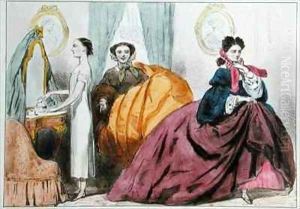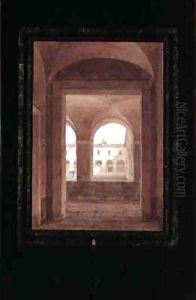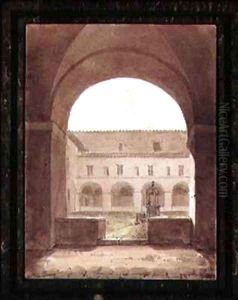Paul Emile (or Destouches) Detouche Paintings
Paul Emile Destouches, who is also known as Paul Detouche, was a French artist and lithographer born on April 2, 1829, in Paris, France. He was known for his work in the realm of lithography, a printing process that was used extensively in the 19th century for reproducing illustrations. Detouche was active during a vibrant period in French art where lithography became a popular medium for artistic expression, particularly for its ability to capture the tone and detail of drawings.
Detouche's career spanned the years leading up to and through the Second Empire in France, a time of significant social, political, and cultural change. His works often reflect the styles and interests of the period, including the growing middle class's taste for art that could be reproduced and collected. Detouche became known for his skill and precision in lithography, which made him a sought-after artist for book illustrations, portraits, and reproductions of paintings.
Though not as widely recognized as some of his contemporaries, Detouche contributed to the graphic arts in a manner that helped to popularize lithography as a respected art form. His attention to detail and ability to capture the essence of his subjects made him a valuable contributor to the art world of his time. Unfortunately, not much is widely known about his personal life or training, as his legacy is largely preserved through the works he left behind.
Paul Emile Detouche passed away on February 11, 1895, in Algiers, Algeria. While he may not be a household name today, his work remains a part of the rich tapestry of 19th-century French printmaking, and his lithographs are collectible items that reflect the skill and artistry of the era in which he worked.



